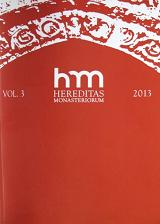Beyond the late medieval economy of salvation: the material running of the Transylvanian mendicant convents
Beyond the late medieval economy of salvation: the material running of the Transylvanian mendicant convents
Author(s): Carmen FloreaSubject(s): History
Published by: Laboratoire de Recherches sur l'Histoire des Congregations et Ordres Religieux (LARHCOR)
Keywords: mendicant orders; friars; economy of mendicant convents; income of mendicant convents; Dominicans; medieval Transylvania; testaments; donations
Summary/Abstract: The study aims at discussing the modalities with which the material running of the mendicant friaries of late medieval Transylvania was integrated into urban economic life. In the last centuries of the Middle Ages, the friars started to play an increasingly important role in the economy of salvation, a situation which often led to conflicts that occurred between the mendicants and the parish church. The main Transylvanian urban centers were largely monoparochial in the timeframe between the thirteenth and the sixteenth centuries and their religious life was cemented by the collaboration between the parish and the city councils. Whilst the urban leadership managed to take in firm hands the administration of the parochial patrimony, it would be worth investigating to what extent such a development could be identified in the case of the mendicant friaries. The analysis of the most important Dominican houses in Transylvania allowed for identification of the attempts made by the urban magistrate in order to control the friaries’ incomes resulted from donations and testamentary clauses, as well as to employ the friars in various activities related to urban economy.
Journal: Hereditas Monasteriorum
- Issue Year: 2013
- Issue No: 3
- Page Range: 97-110
- Page Count: 14
- Language: English

